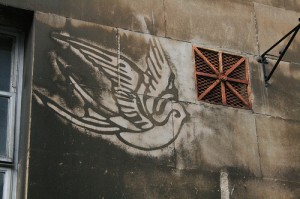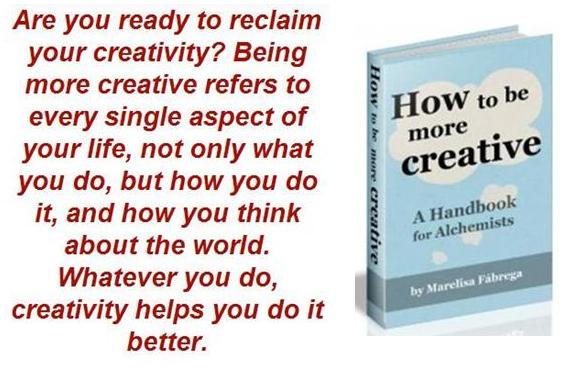 I already wrote in a previous blog post about being more creative by doing things the other way around. Instead of doing things in the regular, logical, straightforward fashion, you get a fresh perspective and generate new ideas by doing the opposite of what would normally be expected.
I already wrote in a previous blog post about being more creative by doing things the other way around. Instead of doing things in the regular, logical, straightforward fashion, you get a fresh perspective and generate new ideas by doing the opposite of what would normally be expected.
I recently came across three great examples of this, and I wanted to share them with you. The three examples are the following:
- Reverse Brainstorming
- Reverse Graffiti
- The Inversion Technique
You’ll find an explanation of these three examples, below.
Reverse Brainstorming
Reverse Brainstorming is a technique in which you state your problem in reverse. For example, you change a positive statement into a negative one, you try to define what something is not, and so on.
Basically, it’s a combination of the well-known brainstorming technique with the technique of changing your perspective so that you can look at the problem or situation from a completely different angle.
Cyriel Kortleven has a great illustration of this on his blog. The example he uses is networking. Instead of asking yourself how you can triple your networking in a month so that you can make more contacts, which could potentially lead to more sales, you could ask yourself something like the following: How can I make sure that no one ever contacts me?
One way no one would contact you is if they don’t have any way to reach you because they don’t have your contact information. And if you never carry business cards with you, people wouldn’t have your contact information. So, how can you can make sure that no one ever contacts you? By never carrying your business cards with you.
Cyriel then recommends that you reverse things once again. Therefore, “Never carry business cards with you” would become, “Always carry lots of business cards with you”. Then, you just magnify that:
- I’m going to give a business card to everyone I come across.
- I’m going to have a t-shirt made with all of my contact information on it and wear it to my next networking event.
- Every time that I meet someone at a networking event I’m going to have my picture taken with that person and send it to them via email after the event with a note saying it was great meeting them (of course, in the picture you’re wearing the t-shirt will all of your contact information on it).
Reverse Graffiti
Although graffiti–done well–can be an art form, it’s often an act of vandalism. A clean wall or surface is defaced with ugly scribbles, profanity written in spray paint, illegal advertisements, and so on.
Reverse graffiti is the opposite of this. A dirty wall covered in soot and grime is beautified by cleaning it in such a way that shapes–often trees, flowers, birds, and so on– are created on the wall.
The image below–as well as the image at the top of this blog post–is an example of reverse graffiti:

Reverse graffiti is often a call on government to clean up dirty, neglected public spaces.
The Inversion Technique
The inversion technique is similar to reverse brainstorming. Here’s an example of the technique from Josh Kaufman’s book, “The First 20 Hours”:
By studying the opposite of what you want, you can identify important elements that aren’t immediately obvious. Take white-water kayaking. What would I need to know if I wanted to be able to kayak in a large, fast-moving, rock-strewn river?
Here’s the inversion: What would it look like if everything went wrong?
- I’d flip upside down underwater, and not be able to get back up.
- I’d flood my kayak, causing it to sink or swamp, resulting in a total loss of the kayak.
- I’d hit my head on a rock.
- I’d lose my paddle, eliminating my maneuverability.
- I’d eject from my kayak, get stuck in a hydraulic (a point in the river where the river flows back on itself, creating a loop like a washing machine) and not be able to get out.
If I managed to do all of these things at once in the middle of a raging river, I’d probably die – the worst-case scenario. This depressing line of thought is useful because it points to a few white-water kayaking skills that are probably very important:
- Learning to roll the kayak right side up if it flips, without ejecting.
- Learning how to prevent swamping the kayak if ejecting is necessary.
- Learning how to avoid losing my paddle in rough water.
- Learning and using safety precautions when rafting around large rocks.
- Scouting the river before the run to avoid dangerous river features entirely.
This mental simulation also gives me a shopping list: I’d need to invest in a flotation vest, helmet, and other safety gear.
Now … I have a concrete list of subskills to practice and actions to take to ensure that I actually have fun, keep my gear, and survive the trip.
Conclusion
Start at the end; think of what you don’t want; flip it on it’s head . . .these are all examples of reverse thinking. Now think of a problem that you’re having or an obstacle that you’re facing, and apply reverse thinking. You might be surprised by the ideas you come up with.



Related Posts:
- 25 Ways to Be More Creative
- Three Unconventional Ways to Find Ideas
- Nine Creativity-Sparking Tips
- Stuck for An Idea? Try SCAMPER
Did you enjoy this article? Subscribe to “Daring to Live Fully” by RSS or by email, and get free updates.








 Marelisa Fabrega is a lawyer and entrepreneur. She holds a Bachelor of Science in Business Administration from Georgetown University in Washington, D.C., as well as a Juris Doctor from the Georgetown University Law Center. You can learn more about her
Marelisa Fabrega is a lawyer and entrepreneur. She holds a Bachelor of Science in Business Administration from Georgetown University in Washington, D.C., as well as a Juris Doctor from the Georgetown University Law Center. You can learn more about her 





